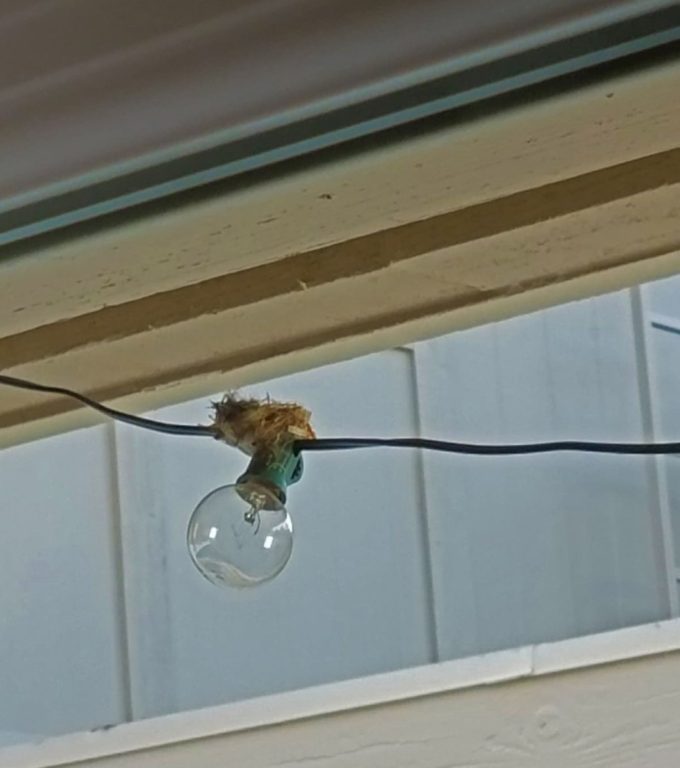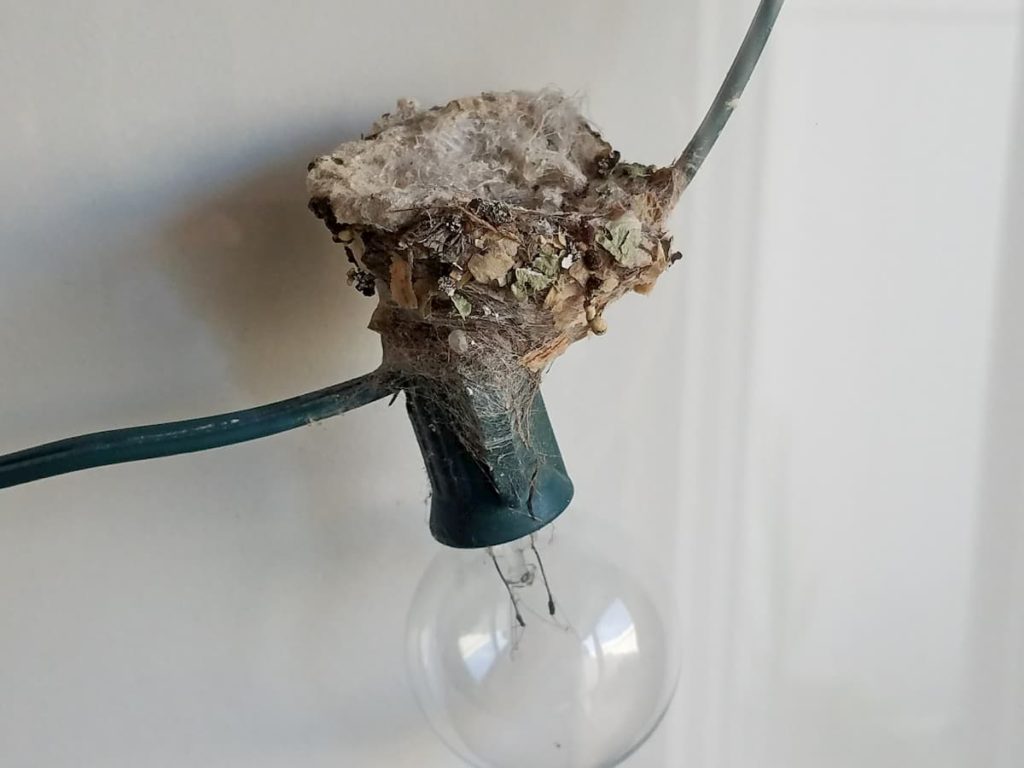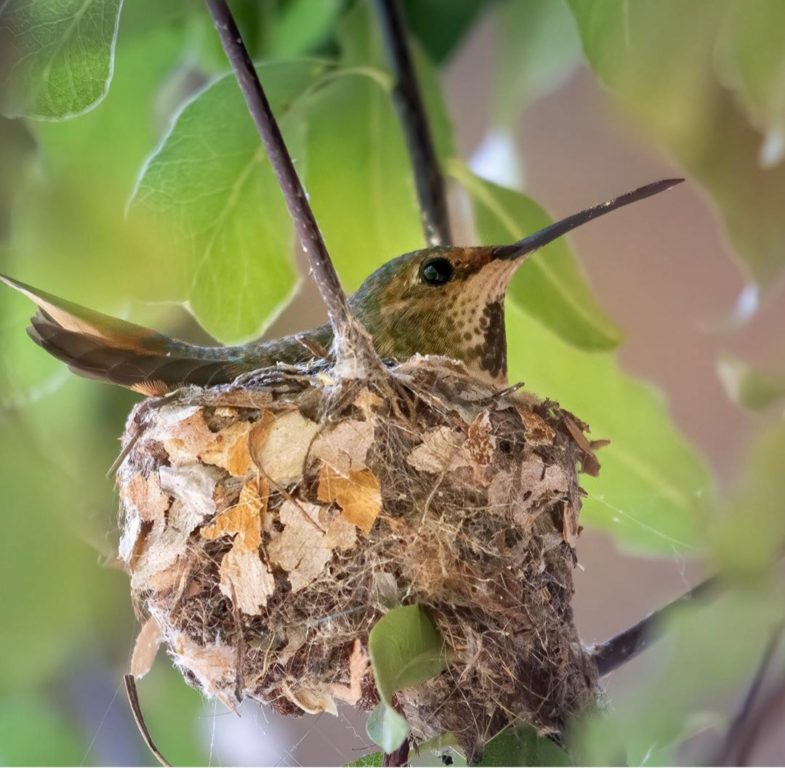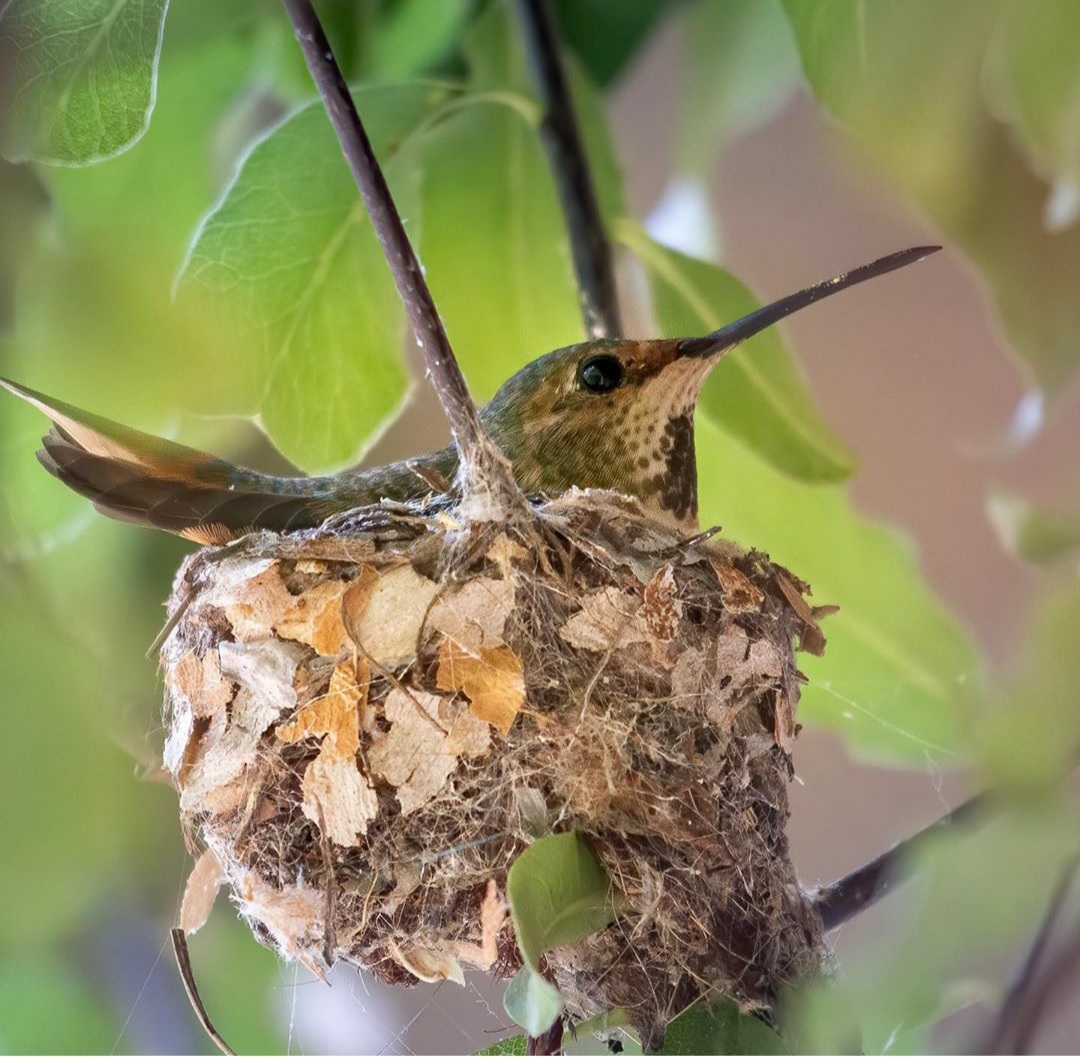This post contains affiliate links.
Hummingbirds are stunningly graceful creatures beloved by everyone. Mating to nesting is a detailed process for hummingbirds preparing to become parents. Originating from the male hummingbird’s flight maneuvers to attract his mate combined with female nesting rituals including complete custody over the offspring are very specific behavior patterns.
Do hummingbirds mate for life?
Male hummingbirds share a polyamorous lifestyle and do not stay with one female. The male establishes his territorial dominance and romantically courts a female. Once the sperm is transferred and the egg is fertilized, the female bears sole custody and responsibility alone in raising her young.
Throughout their life cycle, these distinct patterns are what keep the male roles and female roles very separate and recognizable in their parenting style.
If you are caring for hummingbirds in your garden, understand the journey from mating to nesting. This will put into perspective their evolutionary process and explain the second half of the adventure of being an egg to becoming a fledgling.
See my article on Baby Hummingbirds (Egg to Fledgling)
Marveling at their beauty in the summertime as they collect flower nectar is a favorite pastime for many birdwatchers and nature-lovers alike.
Hummingbird Courtship
The male hummingbird takes his courtship and romance seriously, making sure he utilizes all of his tools and assets to impress a female. The courtship ritual displays their grace, beauty and strength.
The first step is for a male hummingbird to establish his territorial dominance usually taking place near a plethora of flowers and colorful landscapes. Nectar and nutrients in abundance will surely attract the attention of a female hummingbird. Surprisingly, it is not the overwhelmingly fragrant flowers that attract a female since they have no sense of smell, however, their eyesight is superior to humans as is their sense of hearing.
The dominant male hummingbird chases off other male intruders in the area to be sure his flowers and or hummingbird feeders catch the attention of all possible female contenders. Once the established territory has been graced by a female, the male dances and shows off his skills. The two commonly performed courtship displays are the “dive display” and the “shuttle display”.
See my article on Hummingbird Dance: 5 Interpretive Explanations
The dive display, dive bomb display or “J” flight pattern, begins with the male hummingbird assenting to 60 feet to as high as 130 feet into the air and plummeting straight down towards the ground. Before crashing head first, he uses his tail as a rudder to divert his crash. The wind that vibrates through his tail feathers while bracing for a stop creates a “honking” sound.
Along with the sound that is created from the vibrations through his tail feathers he also flies away singing his signature song only to repeat his ritual dance three to four more times. This is his added flair to his dramatic presentation proving to the female his stamina, strength, speed and coordination; all favorable traits for a mother to pass along to her offspring.
After hearing a male hummingbird complete his display of affection it is easy to misinterpret in what order we first hear the sounds. If you were to reverse the video tape and replay it in slow motion you will hear the male hummingbird tail feather vibrations first followed by his vocal seranation.
A shuttle display or “U” shape flight pattern, shows more of the playful, gentle and intimate demonstration of affection. This combination can be more seductive in winning the hand of a female over an obnoxious dive bomb display of affection.
A quietly perched female observes the male as he passionately swings his body from side to side in a “U” shape to gain her interest. During his intimate delivery he produces a vocal serenade along with creating vibrations and whistling sounds produced by expanding and contracting his tail feathers.
The male hummingbird flaps his wings even faster than the average 70 times per second to prove to the female of his competency. If she is responsive, she may join him in this dance of affection.
Regardless of the flight pattern, the male hummingbird is aware of his movements, being sure that his bright colors are reflected through the sun’s rays to show off his assets to the female.
The female is very selective and takes notice of his attributes in her process when choosing to mate.
The male quickly knows if he has won her heart or momentary attention. Her behavior shows that she has been hard at work collecting nesting materials to build a safe and secure location for her eggs.
Hummingbird Mating
The hummingbird mating season varies between locations and regions. In North America and Canada, the mating ritual begins in early spring. They enjoy the summer sun until the winds of winter call them to migrate to warmer climates in Mexico and the Northern tip of South America.
Being independent creatures, they value their solidarity and space. Hummingbirds migrate individually and do not flock with other birds of their species. Therefore, during their mating process, the male hummingbird is only present for the actual courtship and mating ceremony. With a heart rate which can reach over 1,200 BPM (beats per minute), these birds waste little time during their mating and courtship rituals.
There is no penetration during the mating ritual as males do not have any kind of external sexual organ. The actual mating process only lasts for approximately 3-5 seconds.
The male unromantically transfers the “package” to the female as the cloacae (kloh-ay-see) are pressed together which is called a “Cloacal Kiss” (kloh-a-coal) despite being nothing more than business as usual for both of the hummingbirds.
It is incredibly rare to see two hummingbirds mating as this process is performed in a safe and quiet environment with great speed. If you spot this activity during your lifetime, it is considered good luck.
After this, the two birds each go their separate ways, and once again, the male is free to begin his courtship and make efforts to catch another female’s attention continuing his polyamorous lifestyle. The female returns to her newly built nest to get ready for the next stage of laying and incubating the eggs.
Nest Preparation Before Mating
Before the male hummingbird properly catches the female’s attention she needs to be completely prepared to take the next step. She will not be interested in a suitor until her, “home is in order”.
A mother hummingbird’s nest is truly a work of art. She will actually tear down drafts and rebuild her nest if it is not up to her high quality standards. The nest itself may take five days or up to a week to build.

During this time she is busily prepping the nest and creating a safe space to hatch her young. She collects particles for the base of the nest such as grasses, animal fur, cotton fiber, plant material, and small sticks or twigs to create a strong shelter that is resilient against outdoor elements.

The hummingbird nest is not completely created of twigs, and grasses. She adds a final touch of resilience to her home by gathering spider web silk. This material is used as a sort of mortar. The spider web has a stickiness to hold the entire nest together, like glue.
She also considers important issues such as the quantity of available food in the area where she lives and the security surrounding her nest. Abundance of food is important for survival as the new parent hummingbird consumes her own weight in flower nectar each day to survive. Now she has two extra mouths to feed.
Often, the nest is built in areas where there is high foliage for protection or at a high elevation to eliminate access from predators. Many forest dwellers love the nutrients and omegas found in her protein-rich hummingbird eggs. The more hidden she can place the nest the more successful she will be in raising her offspring.
The nests themselves are quite petite, measuring half the size of a golf ball or the size of a half dollar. The tiny structure holds 2 small white eggs; each the size of a coffee bean.
Spotting a hummingbird nest can be tricky since they are well hidden. It can be hard to imagine half the size of a golf ball with 2 small eggs the size of coffee beans swaying back and forth in the trees. It is like looking for a needle in a haystack. Once found, notifying others of your luck and excitement is infectious.
See my article on Can You Move a Hummingbird Nest?
Nest Maintenance
Once the nest is built and the eggs are laid, this will be the mother hummingbird’s time to defend her nest and her territory from outside threats and predators. She may even need to defend her nest from the mating male.
Certain breeds do not create emotional connections to their offspring and it is very common for parents to kill or eat their children if they are weak and feeble. Dark as it may be and counter-intuitive to their desire to keep their species alive, promoting healthy and functioning individuals for future generations over sick ones is a common goal for every species.
The female hummingbird faces numerous obstacles while her children are young and unable to fly. The nest which has been fortified with the tackiness of spiderwebs needs to be maintained through the weather elements. Hummingbirds in harsher environments are challenged with rebuilding as wind gusts can knock all of the eggs to their death.
For example, the Ruby-Throated Hummingbird covers her nest with large, green leaves while her eggs are incubating. This shields her eggs from the sun, rain and also camouflages her young against predators.
The mother hummingbird is highly aware of her surroundings and the strength of her nest. She builds in areas where other predators cannot reach. Nest locations can be located high up in a tree or even in man-made objects located on the front patio or in the backyard.
Incubation
The eggs come shortly after the female has been fertilized. The mother lays 2 small white eggs the size of coffee beans. The eggs are laid one at a time and approximately two days apart. After the second egg has been laid, the female begins incubation to keep her eggs warm.
The incubation process takes two weeks, but varies depending on colder climates. The mother hummingbird is vigilant while keeping her eggs safe, warm, and protected.
Supermom does everything for her offspring from feeding them, house cleaning and of course teaching them how to fly. Some things do not change between species. For the rest of the offspring’s lives, the father will not be around.
Conclusion
The first step of the hummingbird mating life cycle begins with courtship, mating and nesting. The second step of the cycle is raising the newly hatched baby hummingbirds to fledgling. This is a beautiful process!
Dominant male hummingbirds establish their territory by determining the amount of food supply they can defend, such as hummingbird feeders and an abundance of nectar rich producing flowers.
Once a female’s attention is sustained, the male shows off his attributes of strength by partaking in a courtship mating ritual. When the female has made her decision, the act takes less than 4 seconds in a private and quiet location. The male leaves his family and the female carries the sole responsibility of providing for her offspring.
The cycle of life begins again as the fledglings leave the nest. We wish the very best for our tiny little friends as they grow and leave the nest as young adults to start a new successful chapter in their lives.
To continue the journey and to see what happens next, see my article on Baby Hummingbirds: (Egg to Fledgling)
Happy Hummingbird Watching!

Photo taken: Los Angeles, California
(Allen’s Hummingbird)
Backyard Visitors participates in affiliate programs which compensate us for referring traffic.


